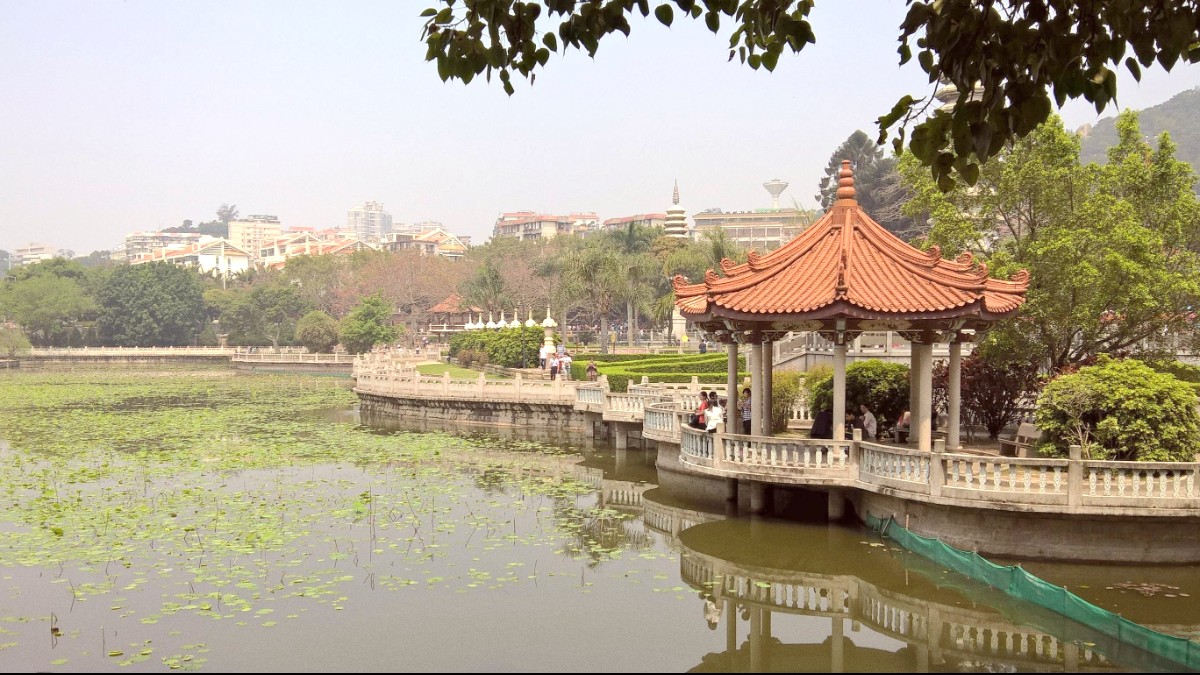
Fujian, China
Xiamen boasts several iconic landmarks that define its historical and cultural landscape. Visiting these sites offers deep insights into the city's past and present.
From the car-free streets of Gulangyu Island to the ancient Nanputuo Temple, each site tells a part of Xiamen's story, blending natural beauty with rich heritage.
Explore smaller parks or less-known hills in Siming District for alternative city panoramas.
On Gulangyu Island in Bagualou, showcases a large collection of organs, including one with over 9,000 pipes.
A revitalized old fishing village, now a hub for art studios, independent galleries, and creative shops.
A large, modern venue hosting theatrical performances, classical concerts, and operas.
Houses various cultural institutions, including a museum, public library, and art gallery.
Xiamen's history, marked by its role as a treaty port and its enduring cultural heritage, is evident through numerous historical sites.
Celebrated for its incredibly diverse architectural styles, blending colonial villas, traditional Minnan houses, and various international designs.
This historic commercial street preserves unique arcade (骑楼 qílóu) architecture from the early 20th century, with covered walkways.
A prominent Buddhist temple and seminary, significant for pilgrims and visitors alike with grand halls and serene atmosphere.
Founded by philanthropist Tan Kah Kee, this expansive educational complex features impressive academic buildings and scenic campuses.
Xiamen Confucius Temple, smaller local temples, ancestral halls, and Christian churches reflect the city's diverse spiritual landscape.
Hulishan Fortress displays late Qing Dynasty coastal defense strategies and impressive artillery, including the world's oldest Krupp cannon.
Shapowei Art Zone, once a traditional fishing port, represents revitalization and preservation of older industrial heritage.
While Xiamen city does not feature major ancient archaeological ruins open to the public as some other historical Chinese cities, sites like Hulishan Fortress give insights into military history and structures from more recent periods.
Xiamen's "Garden City" reputation comes from its many natural attractions, offering green spaces, scenic viewpoints, and coastal beauty for relaxation.
Xiamen Botanical Garden (Wanshi Botanical Garden) features tropical rainforest, desert plants, and serene bamboo forests.
Sunlight Rock on Gulangyu Island offers breathtaking panoramic views of the island and Xiamen skyline.
Huandao Road features beaches like Baicheng Beach and Pearl Bay, popular for swimming and relaxation.
Wuyuanwan Wetland Park is an excellent spot for birdwatching, especially during migratory seasons, home to mangroves and diverse bird species.
Distinctive granite formations on Gulangyu Island and along the Xiamen coastline contribute to the area's unique natural beauty.
Yundang Lake, a large urban lake, is popular for leisurely walks, jogging, and evening cruises, a serene escape within the city.
The Island Ring Road (Huandao Road) offers continuous views of the sea, numerous beaches, and Taiwan's Kinmen Island on clear days.
Located further inland, this zoo houses a variety of animal species from China and around the world, a structured environment for viewing wildlife.
Xiamen Botanical Garden, also known as Wanshi Botanical Garden, is large and diverse, featuring various themed areas including a lush tropical rainforest and a fascinating desert plant section.
Wuyuanwan Wetland Park, Xiamen's largest wetland park, is located in the northeastern part of the city. It serves as an important ecological area, home to mangroves and diverse bird species.
Visit popular attractions like Gulangyu Island early in the morning or late in the afternoon to avoid peak crowds, especially on weekends and holidays.
For ticketing, consider purchasing tickets in advance online, especially for popular sites, to save time.
Beyond the well-known attractions, Xiamen holds several hidden gems that offer a more local and authentic experience. These spots often escape the largest tourist crowds.
Shapowei Art Zone is a revitalized old fishing harbor transformed into a creative district with independent shops, cafes, and art studios.
The "Rocky Landscape" section of the Botanical Garden features stunning cacti and succulent gardens, feeling like a desert oasis.
The intricate colonial villas and quiet lanes of Gulangyu Island provide endless photographic possibilities, capturing its unique architecture.
Consider different times of day for varied lighting and fewer crowds.
Consider specialized tours for exploration of Xiamen's less-known facets. These can offer unique perspectives and access to local insights.
Local guides enhance the experience with historical context and local stories.
These spots offer a chance for unique discoveries and a more intimate look at Xiamen.
Group attractions by geographic proximity to minimize travel time and maximize exploration.
Xiamen's metro and bus systems efficiently connect most major attractions, a cost-effective way to get around.
Many attractions, notably Gulangyu Island and temple complexes, involve extensive walking.